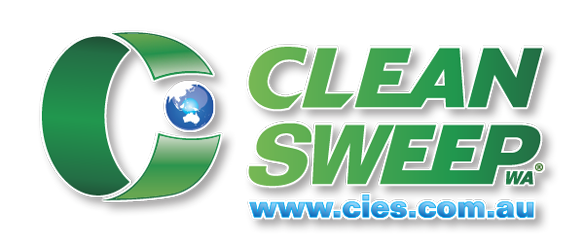Effective fleet maintenance is a crucial aspect of ensuring the optimal performance, safety, and longevity of both commercial and municipal sweepers. In this blog, we will offer an in-depth look at the importance of maintaining a thorough fleet care strategy, showcasing how tow-behind, walk-behind, large, and small sweepers require routine cleaning and servicing to achieve success in various applications. As a leading provider of sweeping services in Perth and Western Australia, Cleansweep WA Pty Ltd is dedicated to enhancing business operations, maintaining industry standards, and improving community cleanliness through meticulous fleet care.
Equipment maintenance is indispensable for businesses and municipalities to ensure peak efficiency, proper functioning, and reduced downtime. A well-planned and executed fleet maintenance strategy also serves to foster compliance with the stringent regulations governing commercial and municipal sweeping operations. This blog aims to equip readers with essential knowledge and insights to improve their overall fleet care operations by delving into the unique requirements of diverse sweeper types and applications.
Tow-behind, walk-behind, large, and small sweepers all have distinctive specifications and maintenance requirements, from engine and brush care to hydraulic systems and electronic components. The key to seamless operations and an immaculate fleet lies in addressing these unique demands proactively. In the following sections, we will present expert tips, essential guidelines, and industry best practices that will aid businesses and municipalities in adhering to stringent regulatory standards, protecting their investments, and fostering cleaner communities in the region.
Different Types of Sweepers and their Unique Applications
To effectively maintain your fleet of sweepers, it is vital to understand the different types of sweeping equipment and their specific applications. In this section, we will provide an overview of each type of sweeper and their ideal uses.
1. Tow-Behind Sweepers
Tow-behind sweepers are compact machines that can be attached to a towing vehicle, such as a utility vehicle or pickup truck. Their compact size and versatile design make them suitable for various applications, including small parking lots, pathways, and sports facilities.
2. Walk-Behind Sweepers
Walk-behind sweepers are manually operated machines ideal for cleaning medium-sized areas, such as footpaths, sidewalks, and narrow spaces. Their manoeuvrability and ease of use make them a popular choice for businesses and municipalities alike.
3. Large Sweepers
Large sweepers are designed to handle expansive surfaces or high volumes of debris, making them a suitable option for urban streets, highways, and large-scale commercial facilities. Their efficient cleaning capabilities and robust construction ensure top-notch performance for heavy-duty applications.
4. Small Sweepers
Small sweepers are compact machines that offer efficient cleaning solutions for smaller or hard-to-reach areas such as alleyways, parking garages, and public parks. These sweepers can be easily manoeuvred, ensuring optimal results in various settings.
Streamlining Fleet Maintenance: Best Practices
Now that we understand the diversity in sweeping equipment, let us explore the best practices for maintaining and optimising their performance.
1. Regular Inspections and Preventative Maintenance
Regular inspections and preventative maintenance are crucial to identifying and addressing potential issues before they escalate. Following manufacturer guidelines and maintaining a well-documented maintenance schedule ensures the longevity and performance of your sweeper fleet.
2. Proper Lubrication and Cleaning
Keeping your sweepers well-lubricated and debris-free is essential for smooth operations and preventing unnecessary wear and tear on components. Follow manufacturer recommendations for specific lubrication points and cleaning protocols to ensure optimal results.
3. Monitoring and Replacing Wear Parts
Periodically assessing and replacing wear parts, such as brushes, belts, and bearings, is crucial to maintaining efficient function and preventing damage to other components. Establish a proper monitoring system and invest in quality replacement parts to guarantee top performance.
4. Employee Training and Engagement
Ensure that your team is well-versed in proper machine operation, safety protocols, and maintenance procedures to reduce the risk of breakdowns and accidents. Conducting regular training sessions and encouraging employee feedback promotes a proactive maintenance culture.
Leveraging Technology for Efficient Fleet Management
Embracing the latest technological advancements can significantly enhance your fleet maintenance efforts. In this section, we will discuss the benefits of incorporating technology into your fleet management strategy.
1. Telematics and GPS Tracking Systems
Investing in telematics and GPS tracking systems not only helps you monitor your fleet’s location and activities but also aids in identifying inefficiencies and potential mechanical issues. These systems provide valuable insights to streamline operations, optimise routes, and reduce costs.
2. Maintenance Management Software
Implementing maintenance management software can assist you in managing and documenting fleet maintenance schedules, tasks, and repairs. This ensures effective planning, resource allocation, and adherence to regulatory requirements.
3. Remote Diagnostics and Predictive Maintenance
Remote diagnostics and predictive maintenance technologies utilise data and algorithms to monitor and forecast potential equipment issues, enabling you to proactively address concerns before they escalate. This improves operational efficiency and reduces unplanned downtime.
Choosing the Right Service Provider for Comprehensive Fleet Care
Partnering with an experienced and reputable service provider is essential for expert fleet care and maintenance, ensuring your business continues to thrive. Let’s discuss some essential criteria when choosing a service provider.
1. Demonstrated Expertise and Industry Knowledge
An experienced service provider should possess extensive expertise and industry knowledge, demonstrating their ability to cater to your unique requirements and offer innovative solutions.
2. Comprehensive Services and Support
Your chosen service provider should offer a range of comprehensive services and support options tailored to your needs, from preventive maintenance and repairs to parts supply and equipment rentals.
3. Quality and Reliability
The ideal service provider should maintain a strong focus on quality and reliability, showcasing their commitment to long-lasting solutions and customer satisfaction.
Conclusion
Implementing a robust fleet maintenance strategy is indispensable for ensuring the optimal performance and longevity of your commercial and municipal sweeping equipment. By understanding the unique requirements of different sweeper types, adopting best practices for fleet care, and leveraging technology, you can significantly enhance your fleet’s efficiency and productivity.
Partnering with the right sweeping company in Perth like Cleansweep WA Pty Ltd can further streamline your fleet maintenance efforts and ensure your operations continue to impress in Perth and Western Australia. Trust our expert team to maintain and elevate the performance of your sweeping fleet with bespoke solutions and exceptional service that exceeds your expectations.

